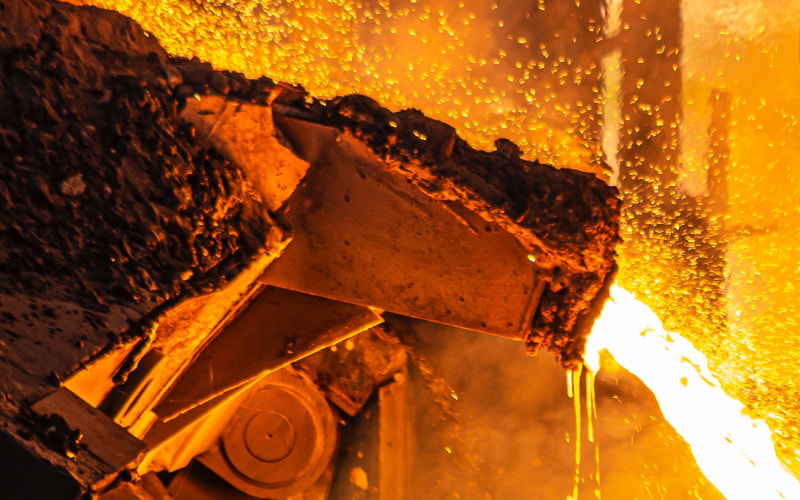

Melting Points of Metal
Date Published: 3/21/22 | Last Updated: 10/16/24
One of our most commonly asked questions is about the melting point of metals. Depending on the project or end-use, the melting point can have a huge impact on your result. If you’re trying to melt metal or expose the metal to high heat, you’ll want to be aware of the melting point for the specific material you are using.
The melting point of iron alloys and the melting point of steel, occur at higher temperatures, around 2,200-2,500 Fahrenheit (°F) / 1,205-1,370 Celsius (°C). Melting points of Copper Alloys (including bronzes, pure copper, and brass) are lower than iron, at ranges around 1,675-1,981°F / 913-1,082°C. Aluminum Alloys have a lower temperature range than copper alloys. Pure aluminum melts at about 1,218 °F / 659 °C, but alloying with other elements can raise this.
Check out our quick answers on the highest and lowest melting points of metals, a video guide, and a table including more common metals found in our catalog, as well as an extensive table of all metals and their melting points.
Which Metal Has the Lowest Melting Point?
At the lower end of the melting point spectrum, lead melts at the relatively low temperature of 621 °F / 327 °C.
But, the melting point of metals is more complicated than you’d imagine. There isn’t a set temperature where metal melts. Rather, there is a range going from Solidus to Liquidus. You might guess from the names, this is the range from when metal is solid (Solidus) to liquid (Liquidus).
To help answer that question and explain more, check out our new video below. (Video measured in °F)
Which Metal Has the Highest Melting Point?
Towards the high end of melting point extremes, nickel and tungsten both melt at very high temperatures. Nickel melts around 2,646 °F / 1,452 °C, Tungsten around 6,150°F / 3,399 °C, yes you read that number correctly.
Guide to Melting Points Video
What are the Common Melting Points of Metals?
This melting point chart contains the most common metals used in manufacturing in order of their melting points, and are more commonly used due to factors like strength and corrosion resistance. Scan below to find melting point temperatures of popular metals you can purchase from Online Metals today.
Metals
Fahrenheit (f):
Celsius (c):
Find a more comprehensive table of metals below containing the melting temperatures in Fahrenheit, Celsius, and Kelvin. We do not carry all these metals but provide them as reference information.
Full List of All Metals and Their Melting Temperatures
Metals
Fahrenheit (f):
Celsius (c):
Kelvin (k):


 Continue modifying your quoted cart?
Continue modifying your quoted cart?